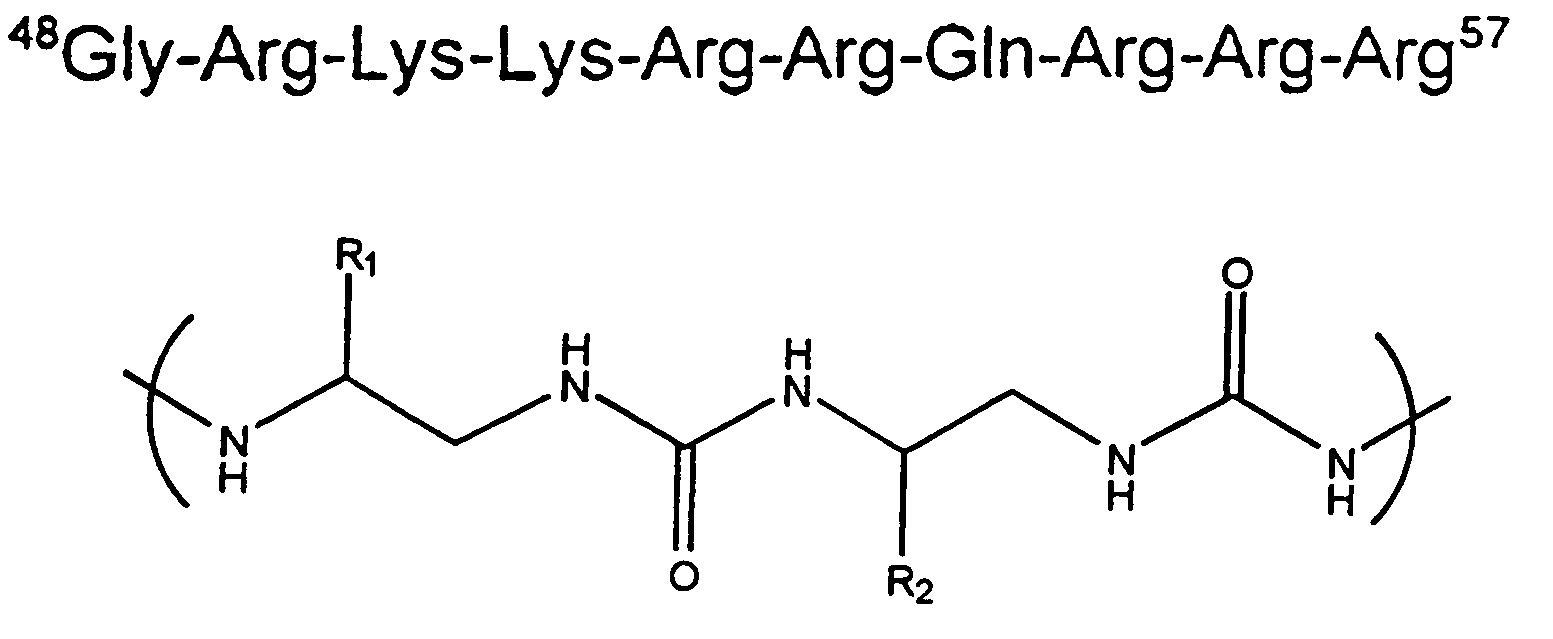Tat-derived oligourea and its method of production and use in high affinity and specific binding HIV-1 TAR RNA
a technology of tar rna and tar rna, which is applied in the field of synthesized oligoures, can solve the problems of difficult design of ligands for sequence-specific rna recognition, and achieve the effect of higher binding affinities for rna
- Summary
- Abstract
- Description
- Claims
- Application Information
AI Technical Summary
Benefits of technology
Problems solved by technology
Method used
Image
Examples
example i
[0023]We synthesized an oligourea containing the basic-arginine rich region of Tat by solid phase synthesis methods, and tested for TAR RNA binding. This tat-derived unnatural biopolymer binds TAR RNA specifically with affinities higher than the wild-type Tat peptide. Site-specific photocrosslinking experiments using a photoactive analog (4-thio-uracil) containing TAR RNA revealed that the unnatural biopolymer interacts with RNA in the major groove. The oligourea-RNA complexes were stable to proteolytic digestion. RNA recognition by an oligourea provides a new class of RNA-binding molecules that can be used to control cellular processes involving RNA-protein interactions in vivo.
[0024]In this report, we synthesized an oligourea containing the basic-arginine rich region of Tat by solid phase synthesis methods, and tested for TAR RNA binding. Oligoureas have backbones with hydrogen bonding groups, chiral centers, and a significant degree of conformational restriction. Introducing addi...
PUM
| Property | Measurement | Unit |
|---|---|---|
| temperature | aaaaa | aaaaa |
| dissociation constant | aaaaa | aaaaa |
| temperature | aaaaa | aaaaa |
Abstract
Description
Claims
Application Information
 Login to View More
Login to View More - R&D
- Intellectual Property
- Life Sciences
- Materials
- Tech Scout
- Unparalleled Data Quality
- Higher Quality Content
- 60% Fewer Hallucinations
Browse by: Latest US Patents, China's latest patents, Technical Efficacy Thesaurus, Application Domain, Technology Topic, Popular Technical Reports.
© 2025 PatSnap. All rights reserved.Legal|Privacy policy|Modern Slavery Act Transparency Statement|Sitemap|About US| Contact US: help@patsnap.com



